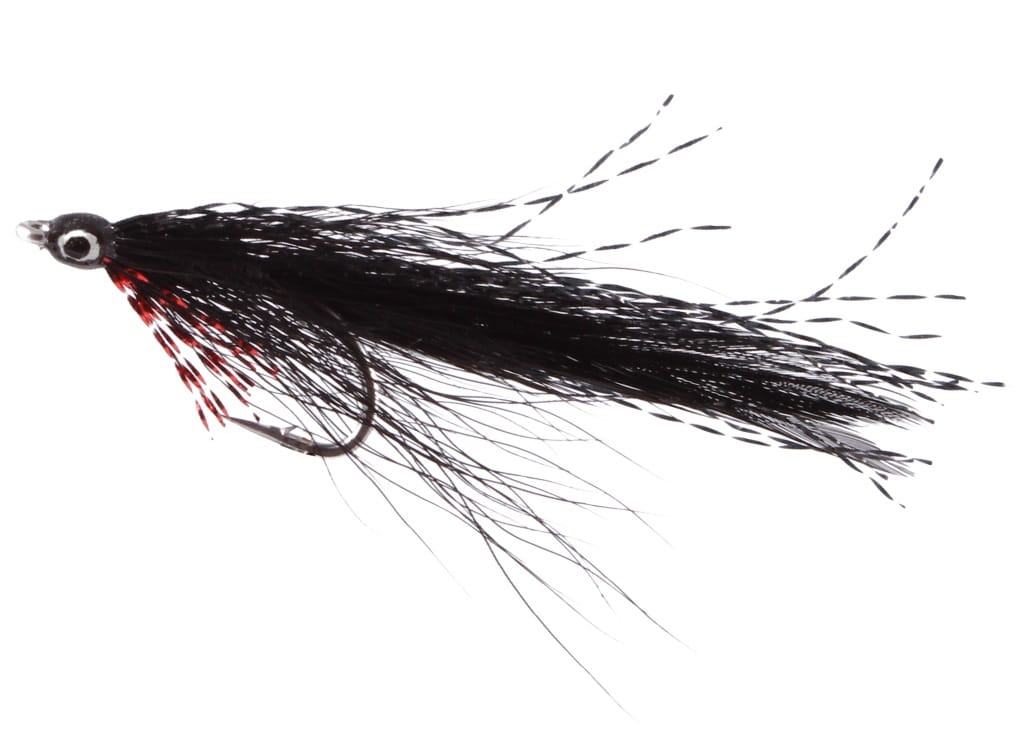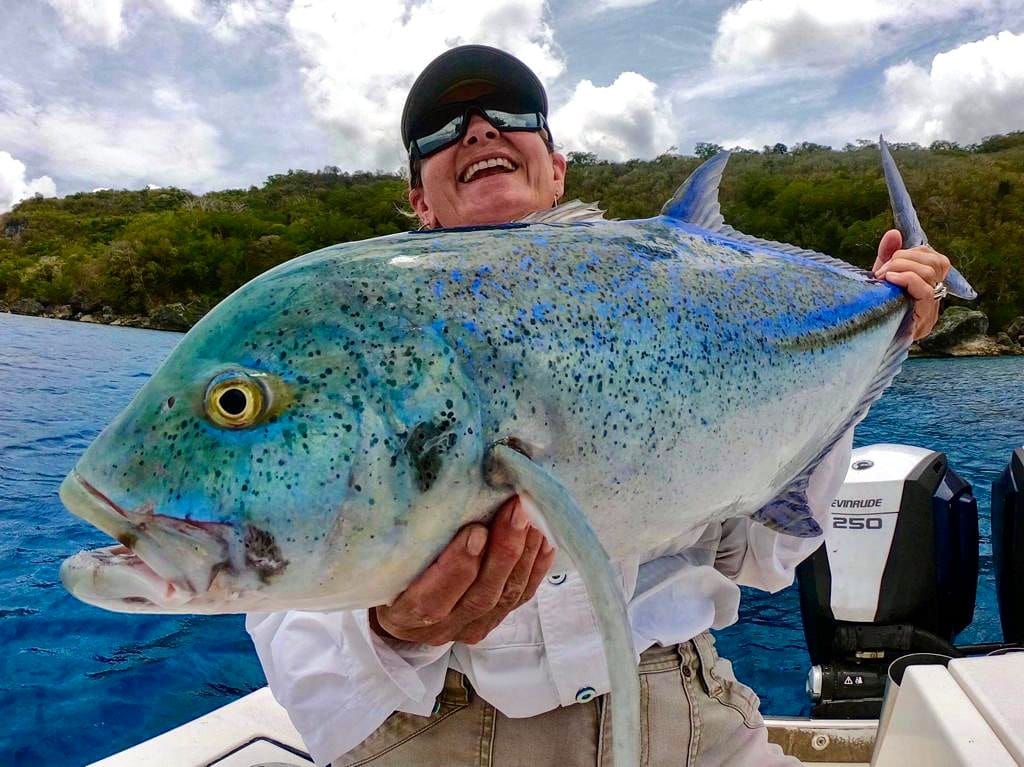Considered by many as the most beautiful fish in the Carangidae or Jack family– thanks to its mixed colors of blue, green and yellows, they don’t only look good but are also a tough and fun opponent on rod and reel. Let’s learn more about the Bluefin Trevally!
About the Bluefin Trevally
The Bluefin Trevally are also known as Bluefin Jack, Spotted Trevally, Blue Spotted Trevally and Blue Ulua. They are distributed throughout the tropical waters of the Indian and Pacific Oceans, ranging from Eastern Africa in the west to Central America in the east, including Japan in the north and Australia in the south.
They are insanely strong for their size and are a highly prized target for light tackle enthusiasts and fly anglers alike. They got their name from their wonderful coloration. Their overall body color is a dark green with electric blue spots or markings, along the back all the way down to the tail and usually crossing bellow the lateral line. Their pectoral fins are translucent white to brown or sometimes bright yellow, while the dorsal and anal fins are bright blue.
“The juveniles hunt in packs which makes fishing for them a visual treat!”
They inhabit inshore environments like lagoons, bays, shallow reef as well as deeper reef structure, bommies and atolls. Their diets consist of smaller fish, cephalopods and crustaceans allowing us to target them using a wide variety of lures and flies. The juveniles hunt in packs which makes fishing for them a visual treat! Larger specimens also hunt in packs at times but also feed alone when provided with opportunities at easy meals.
The average length of a Bluefin Trevally is 60cm and weigh about 3 – 7kg. They reach maturity in about 2 years or so and can live up to 4 years.
The Gear
When targeting Bluefin Trevally, anglers have a wide range of gear and techniques at their disposal which make them a very fun target on rod and reel. They are usually caught as by-catch when hunting for their larger cousins like Giant Trevally and other reef species using popping gear, but if you are keen to specifically target them, light to medium tackle should be utilized for maximum fun and excitement.
Spinning tackle from 10 – 15kg setups are a great starting point, with rods up to 8 feet in length for increased casting distance. Rods from 6 and a half feet to 7 feet are still highly recommended as the fish are not picky as long as you get the lures into the strike zones consistently. 4000 – 5000 sized reels are best with 15 – 30lb braided line loaded onto them. You need the line strength to stop them from getting into the reef and bust you off. They hit almost any type of saltwater lure from medium sized to small poppers and stickbaits, diving minnows and even soft plastics. They are not very picky and if you place your lure in the right places at the right times, you’ll surely get a pack attack going and one will eventually hook up!
A 9 weight fly setup is the bare minimum but we highly recommend a 10 weight setup with a 9 foot long fly rod casting weight forward floating fly lines or intermediate sinking lines. 20lb tippet is recommended to help prevent getting cut off on reef and coral but this still doesn’t guarantee a catch. Clouser minnows on sizes 1/0 and 3/0 with dumbbell eyes to make them sink into the strike zones, then stripping them fast and long. Expect strong strikes! Deceiver flies imitating small baitfish are also very effective. Strip them back as fast as possible for the best effect.“They are not very picky and if you place your lure in the right places at the right times, you’ll surely get a pack attack going and one will eventually hook up!
Finding Bluefin Trevally
These beauties love hanging around rocky and reefy structure and will hunt in small packs. You will often see bluefin packs patrolling shallow reef in search of prey with the odd few birds following them above. It pays to position your boat close to the reef where it drops off to allow the angler to cast onto the reef with about a meter of water over them. Current is key and when water is moving during a pushing tide, they’ll get onto the reef or flats to hunt for prey. This will be the time for the best chance of success. When the push begins, the Bluefin Trevally along with other big predators will start to move so be ready and keep your eyes open for sight casting opportunities. Having a Y-shaped archipelago of about 82 islands with rugged coastlines and pristine reef environments, coupled with a tropical climate that can be fished year round, Vanuatu is one of the best locations to fish when targeting Bluefin Trevally. We have light tackle inshore fishing trips that can be customized to specifically chase these beautiful species or you can hop on board our bluewater adventures that target bigger Giant Trevally and other pelagic species with a chance to catch Bluefin Trevally as by-catch.Get in touch with us to learn more about the fishing opportunities we offer and we can tailor a trip for you if you are keen to target Bluefin Trevally!
Having a Y-shaped archipelago of about 82 islands with rugged coastlines and pristine reef environments, coupled with a tropical climate that can be fished year round, Vanuatu is one of the best locations to fish when targeting Bluefin Trevally. We have light tackle inshore fishing trips that can be customized to specifically chase these beautiful species or you can hop on board our bluewater adventures that target bigger Giant Trevally and other pelagic species with a chance to catch Bluefin Trevally as by-catch.Get in touch with us to learn more about the fishing opportunities we offer and we can tailor a trip for you if you are keen to target Bluefin Trevally!

